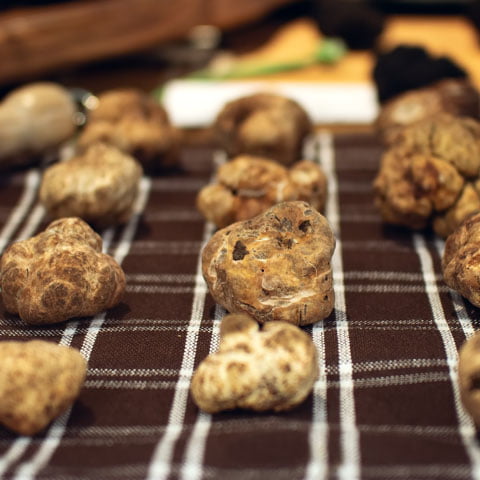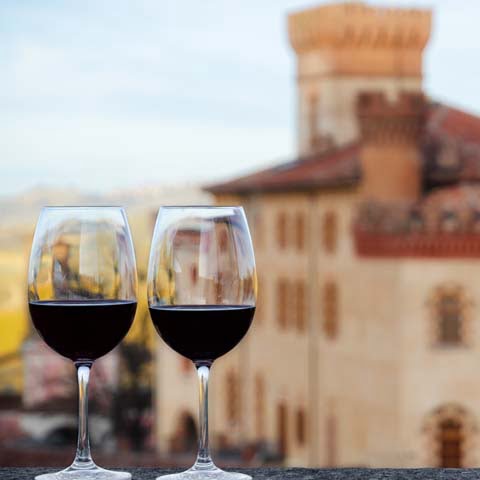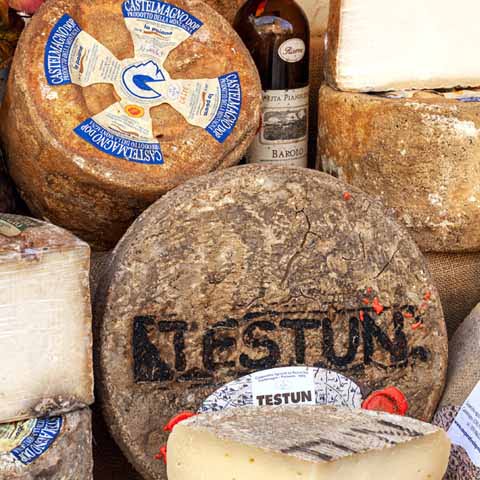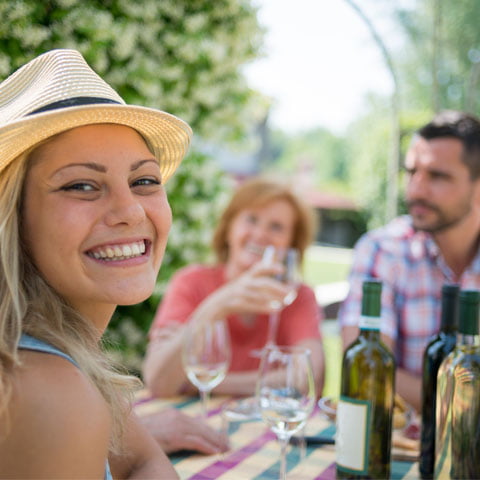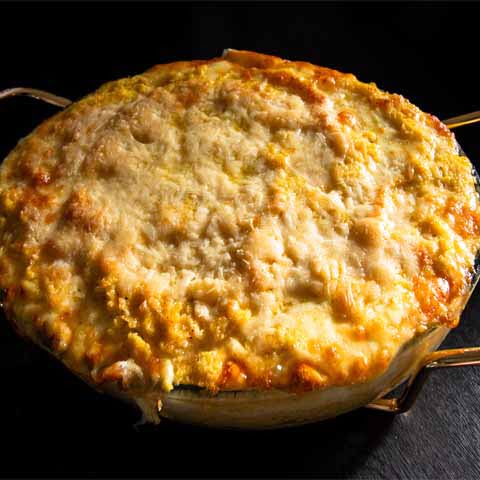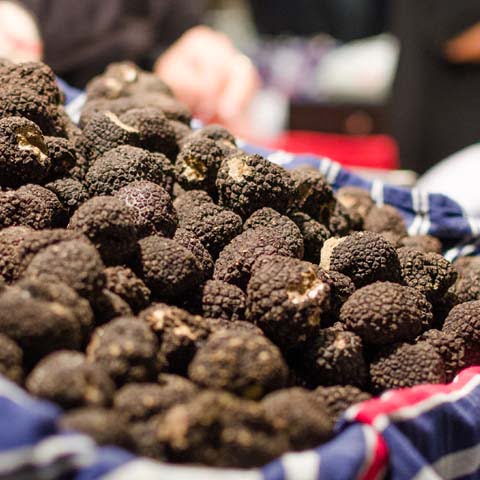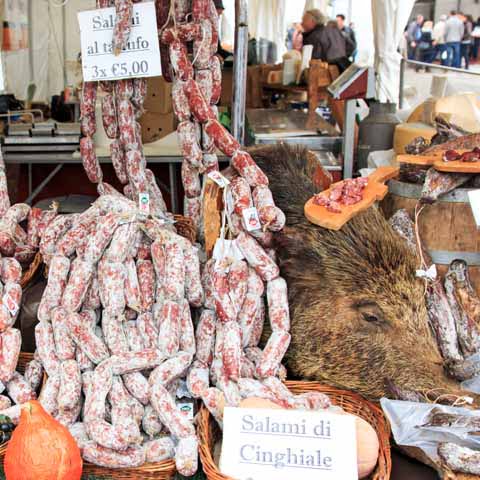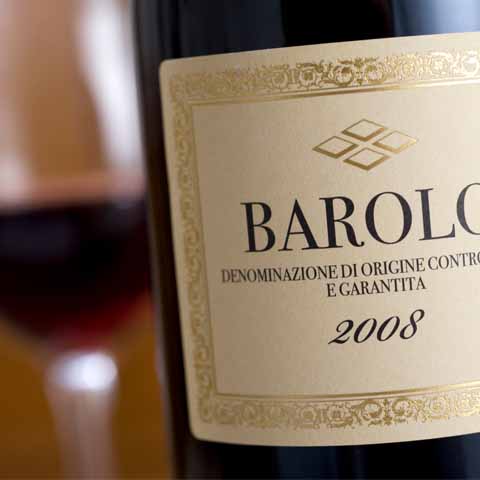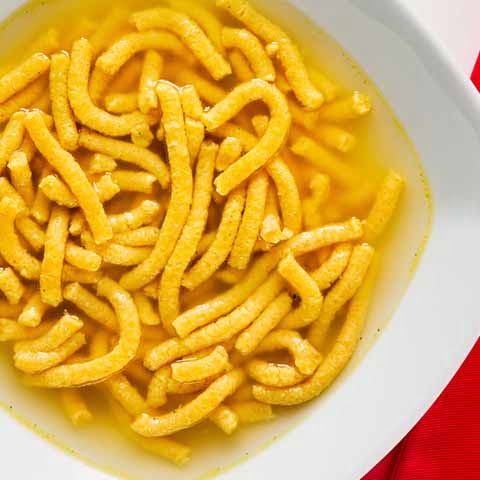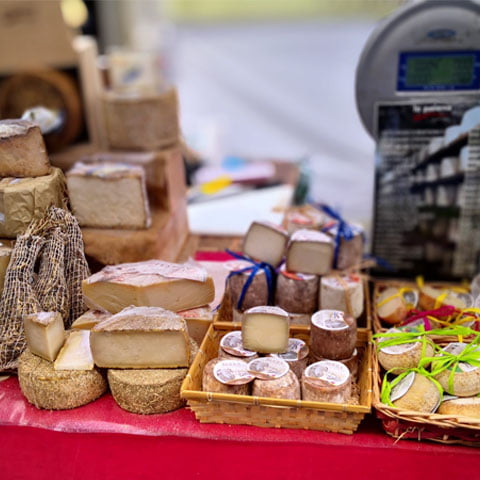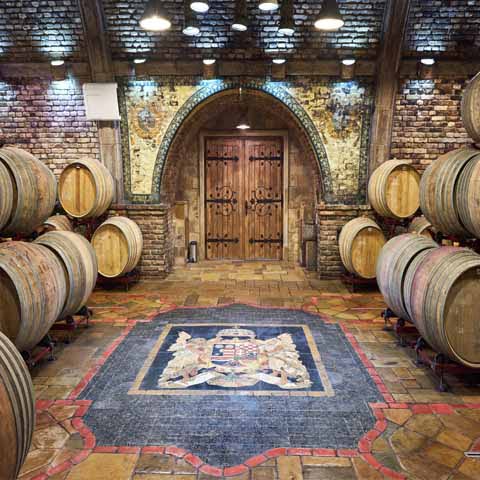In the northeast corner of Italy, approximately 40 miles outside of Turin, sits the charming little town of Alba. The only thing possibly more magnificent than the city’s beautiful hilly surroundings and mountains in the distance, are the delicious offerings of the local cuisine. To dine in Alba is to truly sample some of Italy’s finest fare.
The fertile rolling green hills of the Langhe Area that surround the heart of Alba play a huge role in the city’s agricultural industry. The crops with the most pronounced presence here are white truffles and hazelnuts. Not only are these foods enjoyed locally, but they are exported to cities spanning the globe. In addition, the town is known for making a unique pasta shape with egg dough, known locally as tajarin. And more recently, Alba has been associated with the Ferrero company, famous around the world for its chocolate and hazelnut creations.
A truffle, or tartufo, is a major worldwide export for Alba. Many renowned chefs prefer only the best when it comes to truffle accents for a variety of dishes. In the gourmet world, white truffles (tuber magnatum) are largely considered to be the best variety available and can sell for hundreds of dollars. The truffles are rare because they cannot be cultivated, rather they grow spontaneously with the aid of specific trees or shrubs. Traditionally, truffles are served as shavings atop dishes such as pasta and many other local specialties. White truffles are such a part of the Alba culture that the city dedicates the months of October and November to celebrate them with the International Alba White Truffle Fair.
APPETIZERS
Throughout Italy, locally produced cured meats and cheeses are featured on restaurant menus as appetizers. Alba is no different. Among the city’s cured meats, perhaps the most noteworthy is salame made with locally harvested white truffle. When it comes to cheese, traditional favorites in the area include robiola d’Alba, Murazzano, and Castelmagno.
Cheese is also a key ingredient of Bruss delle Langhe, a spread made by aging cheese in milk and a small amount of grappa. Bruss delle Langhe is often served with friciule, or pieces of fried dough.
Carne cruda all’albese, also known as carpaccio, is quite prominent in Alba as well. This delicacy consists of thin slices of raw veal marinated with lemon juice and seasoned with extra virgin olive oil, flakes of Grana cheese, and freshly ground black pepper. Some restaurants in Alba may also add truffle shavings or porcini mushrooms.
Another local dish featuring veal is vitello tonnato, which may be served as an appetizer or as a second course. This dish is made by poaching thin slices of veal and serving them cold with a sauce made from eggs, tuna, and capers.
Though it might sound strange in a landlocked region like Piedmont, anchovies are not uncommon in the local cuisine. The fish were popular in ancient times because they were easy to store and preserve, especially in the mountains. One local specialty in Alba is acciughe al verde, or anchovies served on bread with a green sauce made from parsley, basil, vinegar, extra virgin olive oil, and egg yolks.
Last, but not least, is bagna cauda, which is one of the staples of Piedmontese cuisine. This local favorite is made for sharing and is best enjoyed in the company of good friends. Bagna cauda is a rich sauce made from anchovies, extra virgin olive oil, and lots of garlic and accompanied by local raw vegetables that are dipped into the sauce. Traditionally, bagna cauda is served in earthenware vessels that are heated with embers and ashes. In addition to being an appetizer, bagna cauda may also be served as a side dish.
FIRST COURSE
Perhaps the first course that Alba is best known for is agnolotti, which is a traditional stuffed pasta, similar to ravioli, found throughout the Piedmont region. In Alba, they are known as agnolotti del plin, with plin referring to the pinching motion that is made to close the pasta. Agnolotti differ from other stuffed pastas because the filling is made of roasted meat. In Alba, agnolotti del plin may be served with butter and sage, a roasted meat sauce, Piedmontese ragù, or in beef broth.
Tajarin is another type of pasta shape frequently enjoyed in the city. This pasta, sometimes referred to as tagliolini in Italian (tajarin is the name in the Piedmontese dialect), is long and similar to tagliatelle, but thinner. The dough is made with eggs and the pasta has a quick cooking time. Throughout the city of Alba, tajarin can be served in a variety of ways including with a roasted meat sauce as well as beef ragù, sausage ragù, butter and sage, or butter and thin slices of truffle.
As an alternative to pasta, another common first course in the Piedmont region, and the rest of northern Italy, is risotto. While many different variations of risotto can be enjoyed here, perhaps the two most popular forms are risotto al Barolo and risotto al tartufo. Risotto al Barolo is risotto cooked to creamy perfection with the aid of the famous Barolo wine for enhanced flavor. Risotto al tartufo takes all the best features of rich and creamy risotto and pairs it with the remarkable flavors of truffle shavings.
SECOND COURSE
Bollito misto is a common second course throughout much of Italy that is also served in Alba. This warm soup of sorts is a combination of a variety of slow boiled meats served with stew friendly vegetables such as onions, carrots, and celery. Bollito misto may be served with various sauces (such as mayonnaise, mustard, or a green sauce made with herbs and anchovies) as well as sides like potato puree, mostarda (fruit in a mustard-flavored syrup) and cognà (a sauce made from boiling grape must and fruits such as apples, pears, and quinces).
Another popular meat dish in the area is brasato al Barolo, a stew made with the famous Barolo wine. The stew is usually made with beef, specifically from Piedmontese cattle, a highly prized local breed. The stew is cooked slowly for several hours in order to bring out all the flavors from the spices, herbs, and vegetables.
When in Alba, you won’t want to miss the opportunity to try caponet, a local type of cabbage roll filled with ground pork and/or sausage. In some cases, the filling may also feature breadcrumbs and local cheeses.
A truly decadent second course dish in Alba is uova tartufate, or truffled eggs. To make the dish, garlic, parsley, and truffle are briefly sauteed in butter. Afterwards, wine, salt, and pepper are added and allowed to heat up over medium heat. Finally, the mixture is placed on top of fried eggs and garnished with additional slices of truffle.
Also worth a mention is finanziera, a dish dating back to the middle ages that is typical of the area’s cucina povera (poor cuisine). Traditionally, finanziera was made with frattaglie, or offal, leftover from butchered animals. Today, the dish is still made with offal and entrails that are sauteed with garlic and herbs. A variety of less noble parts from different animals may be used and the dish may be served with in season vegetables.
STREET FOOD
With a city like Alba that has so many wonderful foods to contribute to the local Italian cuisine, street foods aren’t as prevalent in this area. However, while wandering the charming cobblestone streets of this adorable city, noshing on roasted hazelnuts and enjoying gourmet chocolate candies are some yummy options on the go.
DESSERT
With the Ferrero factory headquarters in Alba, it is only natural that much of the city’s desserts feature multiple forms of chocolate. Typical of Turin, but also found in Alba, one frequently requested and traditional chocolate treat is bicerin, a special espresso with hints of chocolate and whipped cream. Another popular favorite is gianduiotti, a decadent hazelnut chocolate with a characteristic ingot shape. Don’t be surprised to see Nutella® featured in a dessert or two as Alba is considered to be the birthplace of this indulgent chocolate and hazelnut spread.
Baci di dama are smaller chocolate treats, but they are so good that many believe they are addictive. The cookie’s name translates to “lady kisses” because it consists of two round hazelnut cookies joined together with a chocolate cream that can resemble two lips readied for a kiss. Variations of baci di dama, often simply called baci, can be found throughout Italy, though they are believed to have originated in the Piedmontese city of Tortona.
Showcasing one of the area’s best local products is torta di nocciole, or hazelnut cake. This dense and somewhat dry cake is usually accompanied by a glass of Moscato d’Asti and it is a very traditional way to end a meal throughout the Langhe Area.
Other types of dessert present throughout Piedmont and frequently enjoyed in Alba include bonet, an ancient pudding made with cocoa powder, dry amaretti cookies, and liquor (typically rum), and zabaione, a sweet cream made with egg yolks, sugar, and wine.
WINE
The city of Alba is beautiful in and of its own right, however the green hills covered in vineyards that surround the city are possibly even more so. The land is so fertile that the area is estimated to be home to hundreds of wineries.
Because wine is such a large part of Alba’s identity, much of the area’s local wines are enjoyed on their own with various courses of the meal and also used as an ingredient in meals. For example, the popular dish of risotto al Barolo is a combination of rice and the flavorful Barolo wine.
Some of the best wines enjoyed in the homes and dining establishments of Alba include D.O.C. wines such as Nebbiolo d’Alba, Barbera, Roero, Dolcetto, and Verduno. The D.O.C.G. wine collection generally includes Barolo, Barbaresco, and Moscato.
Regardless of the location or course of the meal, no Alba dining experience is complete without a glass of locally made wine. With some of the finest food in Italy available to you here, plan to allow a two- or three-hour window to thoroughly enjoy all of the regional delicacies that are available to you.
Travel Guides
The Piedmont Region of Italy
The Cities of Piedmont, Italy
